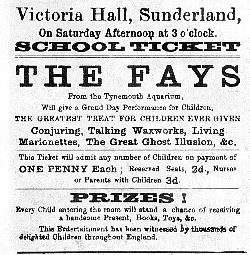
Asphyxia or asphyxiation is a condition of deficient supply of oxygen to the body which arises from abnormal breathing. Asphyxia causes generalized hypoxia, which affects all the tissues and organs, some more rapidly than others. There are many circumstances that can induce asphyxia, all of which are characterized by the inability of a person to acquire sufficient oxygen through breathing for an extended period of time. Asphyxia can cause coma or death.

A crash bar is a type of door opening mechanism which allows users to open a door by pushing a bar. While originally conceived as a way to prevent crowd crushing in an emergency, crash bars are now used as the primary door opening mechanism in many commercial buildings.

An emergency exit in a building or other structure is a special exit used during emergencies such as fires. The combined use of regular and emergency exits allows for faster evacuation, and emergency exits provide alternative means of evacuation if regular exits are inaccessible.
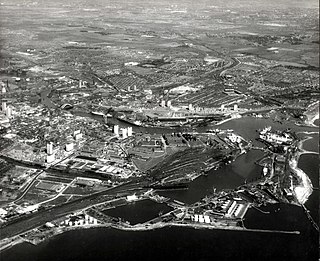
Hendon is an eastern area of Sunderland in Tyne and Wear, North East England, the location of much heavy industry and Victorian terraces and three high-rise residential tower blocks. The area is commonly referred to as the East End of Sunderland. Hendon is west of Sunderland Docks.

The Barnsley Public Hall disaster took place on Saturday 11 January 1908 in a public hall in Barnsley, West Riding of Yorkshire, England. It resulted in the deaths of sixteen children. At least 40 others were seriously injured. A number of children were entering the hall to see a show when a staircase became overcrowded, and there was a crush as they tried to get inside. The survivors were taken to Beckett Hospital.
The Accra Sport Stadium disaster occurred at the Ohene Djan Stadium in Accra, Ghana, on 9 May 2001. It killed 126 people, making it the worst stadium disaster to have ever taken place in Africa. It is also the third-deadliest disaster in the history of association football behind the Estadio Nacional and Kanjuruhan Stadium disasters.

Sunderland High School was a mixed private day school located in Sunderland, Tyne and Wear, England. Founded in 1883 as the oldest girls' senior school in Sunderland, it merged with a local boys' school to become the current coeducational school. A junior school was later added and is located on a separate site nearby. It is owned by the United Church Schools Trust. The school closed at the end of the 2016 Summer term.

Mowbray Park is a municipal park in the centre of Sunderland, Tyne and Wear, England, located a few hundred yards from the busy thoroughfares of Holmeside and Fawcett Street and bordered by Sunderland Museum and Winter Gardens to the north, Burdon Road to the west, Toward Road to the east and Park Road to the south. The park was voted best in Britain in 2008.

The Glen Cinema disaster was a deadly crowd crush caused by a smoking film canister at a cinema in Paisley, Renfrewshire, Scotland, on 31 December 1929. The resulting panic and stampede killed 69 children and injured up to 40 others; the final death toll was 71. It is considered one of the worst disasters in Scottish history. The building that housed the Glen Cinema still stands and, as of 2015, houses a furniture store.
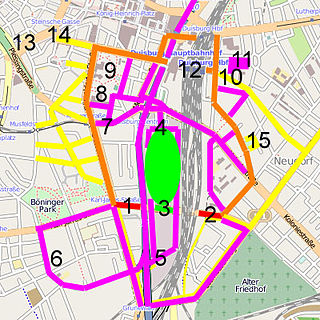
On 24 July 2010, a crowd disaster at the 2010 Love Parade electronic dance music festival in Duisburg, North Rhine-Westphalia, Germany, caused the deaths of 21 people from suffocation as attendees sought to escape a ramp leading to the festival area. 652 people were injured.
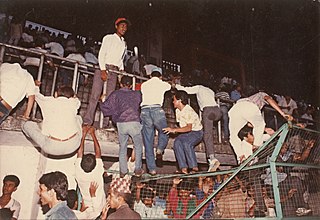
The Dasharath Stadium Disaster occurred on 12 March 1988 at the Dasharath Stadium in Kathmandu, Nepal during a football match between the Janakpur Cigarette Factory and Bangladeshi side Muktijoddha Sangsad KC for the 1988 Tribhuvan Challenge Shield. 93 people were killed and 100 more were injured when attempting to flee from a hailstorm inside the hypethral national Dasarath Rangasala Stadium. The Dasharath Stadium disaster was the 9th biggest stadium disaster until 2006 and the worst stadium disaster in Nepal.

The 1971 Ibrox disaster, also known as the Second Ibrox Disaster, was a crush among the crowd at an Old Firm football game, which led to 66 deaths and more than 200 injuries. It happened on 2 January 1971 in an exit stairway at Ibrox Park in Glasgow, Scotland. It was the worst football disaster until the Bradford City stadium fire in Bradford, England, in 1985. This was followed by 97 deaths in the Hillsborough disaster in Sheffield, England, in 1989.

In 685, King Ecgfrith granted Benedict Biscop a "sunder-land". Also in 685 The Venerable Bede moved to the newly founded Jarrow monastery. He had started his monastic career at Monkwearmouth monastery and later wrote that he was "ácenned on sundorlande þæs ylcan mynstres". This can be taken as "sundorlande" or the settlement of Sunderland. Alternatively, it is possible that Sunderland was later named in honour of Bede's connections to the area by people familiar with this statement of his.

The 2013 Houphouët-Boigny stampede was a crowd crush that occurred as crowds departed a New Year's Eve fireworks display in the early hours of 1 January 2013 near the Félix Houphouët-Boigny Stadium in Abidjan, Ivory Coast. It resulted in 61 deaths and over 200 injuries, mostly women and children. This was the second time in four years that a fatal crush incident occurred at the stadium.
"In Concert" is a very special episode of the television series WKRP in Cincinnati. Airing as the 19th episode of the second season, it was first broadcast in the United States on February 11, 1980 on CBS, and the concept for the episode was described as "admirably ambitious" by William Beamon, writing in the St. Petersburg Evening Independent before he had viewed the episode.
A crowd crush occurred in the Los Olivos District of Lima, Peru on 22 August 2020, killing at least thirteen and injuring six others. The crush was a result of a raid by the National Police of Peru on the Thomas Restobar nightclub to break up an illegal gathering amid the COVID-19 pandemic in Peru.

On 30 April 2021, at about 00:45 IDT (UTC+3), a deadly crowd crush occurred on Mount Meron, Israel, during the annual pilgrimage to the tomb of Rabbi Shimon bar Yochai on the Jewish holiday of Lag BaOmer, at which it was estimated that 100,000 people were in attendance. Forty-five men and boys at the event were killed, and about 150 were injured, dozens of them critically, making it the deadliest civil disaster in the history of the State of Israel. The crush occurred after celebrants poured out of one section of the mountainside compound, down a passageway with a sloping metal floor wet with spilled drinks, leading to a staircase continuing down. Witnesses say that people tripped and slipped near the top of the stairs. Those behind, unaware of the blockage ahead, continued. The people further down were trampled over, crushed, and asphyxiated by compression, calling out that they could not breathe.

Crowd collapses and crowd crushes are catastrophic incidents that can occur when a body of people becomes dangerously overcrowded. When numbers are up to about five people per square meter, the environment may feel cramped but manageable; when numbers reach between eight and ten people per square meter, individuals become pressed against each other and may be swept along against their will by the motion of the crowd. Under these conditions, the crowd may undergo a progressive collapse where the pressure pushes people off their feet, resulting in people being trampled or crushed by the weight of other people falling on top of them. At even higher densities, the pressure on each individual can cause them to be crushed or asphyxiated while still upright.
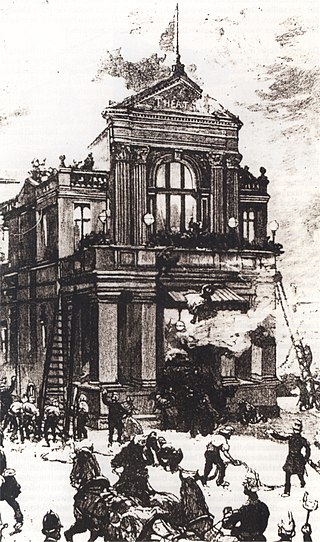
On 5 September 1887, a fire broke out in the backstage area of the Theatre Royal in Exeter, England, during the production of The Romany Rye. The fire caused panic throughout the theatre, with 186 people dying from a combination of the direct effects of smoke and flame, crushing and trampling, and trauma injuries from falling or jumping from the roof and balconies.
